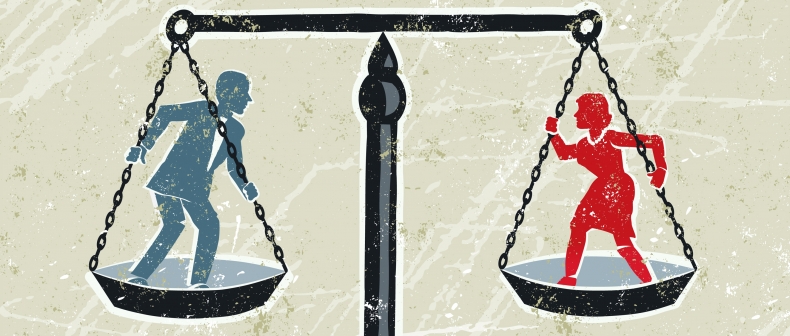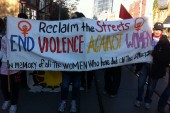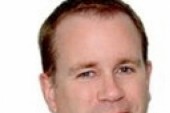
BY ISABEL BASSETT, FORMER MPP AND MINISTER OF CITIZENSHIP, CULTURE AND RECREATION, ONTARIO GOVERNMENT
Men and women have always thought, felt, and acted differently. In a male-dominated world, and especially in corporate leadership, women have struggled to gain power and equality.
Recently, corporate leadership around the world has begun – very tentatively – to reassess this age-old bias in a move towards true gender equality. Why now? Their motives are not as much fairness and equality, as profit, competitiveness, and survival. And their inspiration comes not from passionate podiums, but from neuroscience and accounting.
New York-based firm, Barbara Annis & Associates, works with Fortune 500 companies, helping them to capitalize on the tangible value of gender equality. In her book, Leadership and the Sexes, Barbara Annis collaborated with scientists to scrutinize male and female brains. They identified countless differences in our brains that account for differences in our behaviour. I spoke with Annis, who tells me, “Women cry more, which men misinterpret as falling apart. It’s actually just our genetic outlet for frustration and larger tear ducts – for men it’s pounding the table.”
“A funny thing happens when men and women see this,” she continues. “The science takes the ‘blame’ out of it. It’s like a breath of fresh air. They see the brain scans and can embrace each other’s different approaches to the maximum advantage of an organization.” Although one gender may have preferences and traits more suited for certain types of work, when it comes to decision making and problem solving, it is the combination of traits that produces the best results.
This isn’t just theory: McKinsey and Company’s Women Matter series demonstrates how corporations with a higher proportion of women in leadership positions perform better financially. Annis agrees, “The mindset is changing from ‘great minds think alike,’ to, ‘great minds think unalike.’ You actually do need that collaborative input to get the best job done. CEOs are starting to see the business case for gender equality – it has their attention which is key to making progress.”
Advocating equality using terms like ‘competitive advantage’ and ‘profit’ marks a significant step forward from old-school feminism of a century ago. Then female social activists included Canada’s Nellie McClung, the successful author, politician and feisty feminist largely responsible for Maniitoba’s women gaining the right to vote in 1916 — two years before the federal government followed suit. And women like American Susan B. Anthony, co- founder of the National Women’s Suffrage Association and key player in U.S. women finally winning the right to vote in 1920. In the United Kingdom were women like Emmeline Pankhurst, a formidable social reformer and feminist. Pankhurst gained headlines for her many struggles to win voting rights for women in the U.K., which didn’t happen until 1928, the year she died. In all three countries, these women and many others demanded legal rights and equality, believing their moral superiority was needed to fix the mess men had made of politics.
It’s one thing to legislate a change in behaviour, by giving women rights and opportunities – but it’s much more difficult to change attitudes. Annis explains, “Historically change was just window dressing. The assumption was that if enough women were recruited into the pipeline that would take care of it. But our research shows that doesn’t bring more women to the top. Corporate culture is still a problem.”
“In the last seven years the discourse at the top has changed,” she says. “CEOs and Boards get it, they need to attract and retain the best men and women from a larger talent pool.” How? “We start by finding out what the culture is at all levels. We find out the assumptions and needs of women and men, and if there is a recruitment bias. We have a new diagnostic tool in the Gender Equality Project, which provides a wonderful metric.”
Six years ago in Geneva, Switzerland, Aniela Unguresan, former CEO of CT Technologies, co-founded the not-for- profit Gender Equality Project (GEP) with Nicole Schwab, former Director of the Forum of Young Global Leaders at the World Economic Forum (WEF). Together they developed a viable methodology for firms to assess gender equality and established a global certification system, which is quickly gaining recognition and momentum. In the WEF’s 2012 Global Gender Gap Report, which examines the gap between men and women in four fundamental categories: economic participation and opportunity, educational attainment, health and survival and political empowerment, a distinguishing feature is that it ranks countries according to their proximity to gender equality rather than to women’s empowerment.
“Gender Equality is not about women,” Unguresan emphasizes. “It is about women, and men and the workplace itself. We take into account the interests of all three. We expand the ‘ideal worker’ template to accommodate those who want a non-linear career path. And this pressure to change is also coming from the younger generation who have these assumptions built-in.” That change is happening quickly: in the two years since the pilot, some of the world’s largest corporations have signed on as members of the GEP, across 11 industries in 18 countries on four continents.
“The biggest challenge we faced was the assumption that equality could not be measured in a standardized way across cultures and industries,” Unguresan continues. “So we focused on universal principals.” In 2010 they launched an online pilot where organizations could measure them- selves using three metrics across five categories. “If a company decides to invest resources to improve, they need to be able to measure it quantitatively and qualitatively, and to compare themselves to other firms. This is essential and it’s what we provide.”
Unguresan points out the two biggest trends in Western corporate culture: “First, more men want to share care- giving with their spouses, who also have careers, and firms need to allow flexibility to retain them. Second, recruiters have an outdated template of the ‘ideal worker,’ they expect to be physically present in the office, work long hours and have an uninterrupted career.”
Annis and others use the GEP methodology to help firms understand where they need to improve. “We help them find their blind spots and dispel assumptions. A common one is that women aren’t ambitious enough for the top jobs. Our research shows that the women from the younger generation are actually more ambitious than the men – but they express it differently, and are misinterpreted. A woman will say ‘I want to add more value,’ where a man will say, ‘I want to be the next CEO.’”
Deloitte Canada’s Chief Diversity Officer, Jane Allen, describes the positive results of working with Annis, “Barbara and her team have really helped the partners in our firm understand why there are differences between men and women’s behaviours and preferences. This results in greater recognition of our female talent, more effective working relationships, and ultimately more women in senior positions. There’s a certain level of skepticism about assessment programs, but there were many ‘A-ha!’ moments. We believe that continual awareness- raising is essential to making progress.”
Unguresan sees these ‘a-ha!’ moments as success: “The large corporations hold the key to prosperity of society, because they employ so many people. Many issues can be solved through an evolution of corporate culture.” An oft-quoted management phrase is, ‘What gets measured gets done.’ The GEP methodology provides what has been missing for corporations to embrace gender equality: a standard they want to measure up to – after all, it’s in their competitive nature.
____
This article was crossposted from Women of Influence Magazine. To read more about Gender Intelligence in their Fall 2012 Issue, click here. Watch McKinsey & Company’s “Women Matter” discussion on gender equality here and hear Saadia Zahidi, head of the World Economic Forum’s Women Leaders and Gender Parity program, discuss the WEF’s 2012 Global Gender Gap Report here. Follow Women of Influence on Twitter at @WomenOfInflnce














